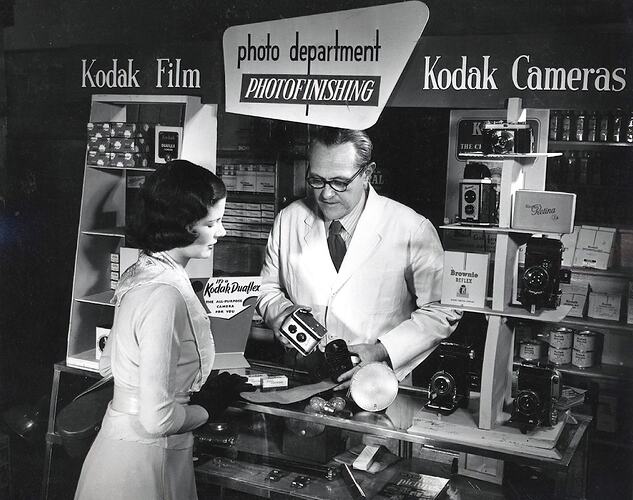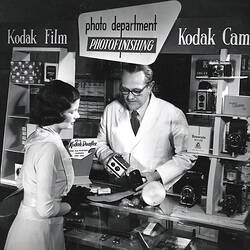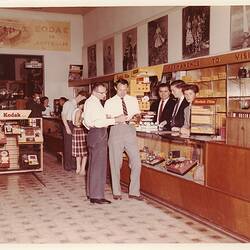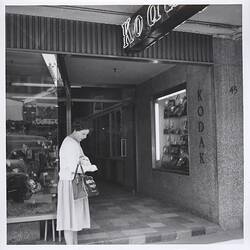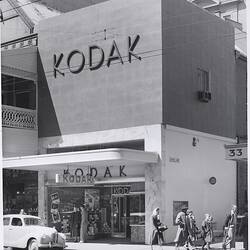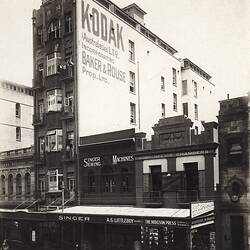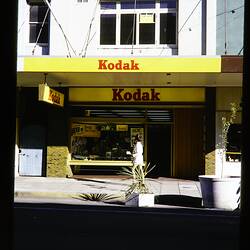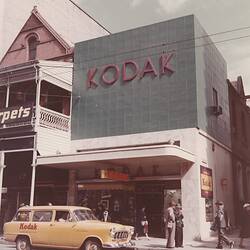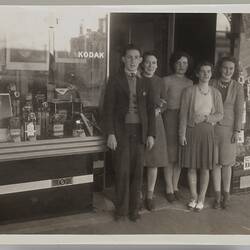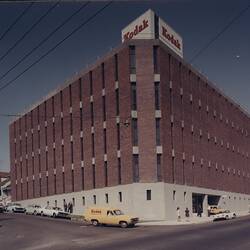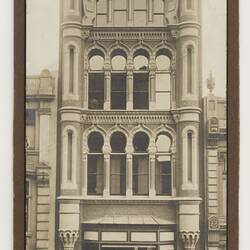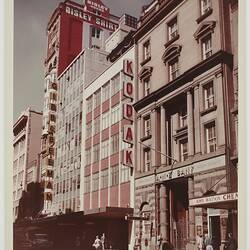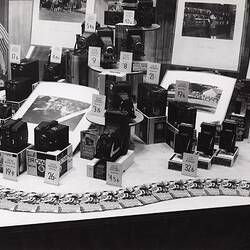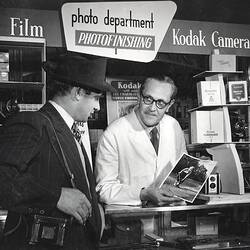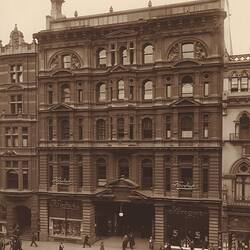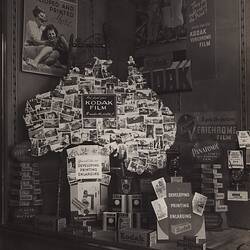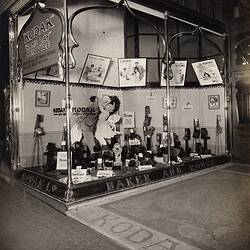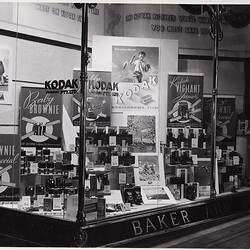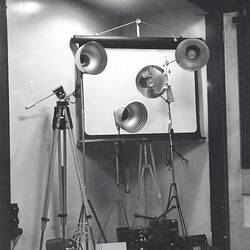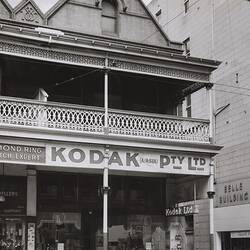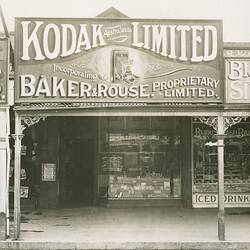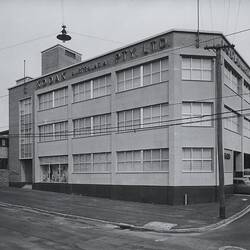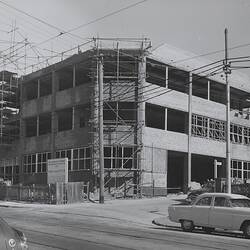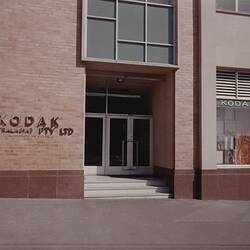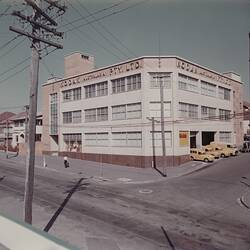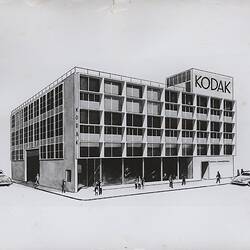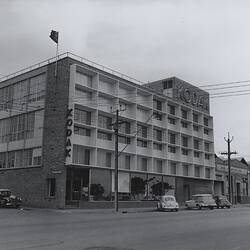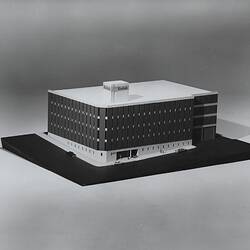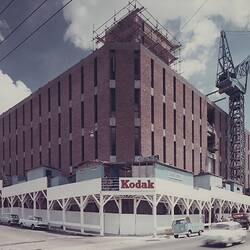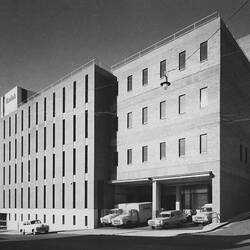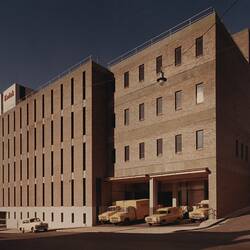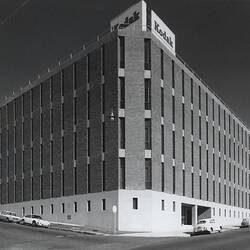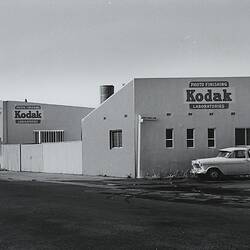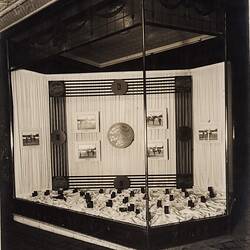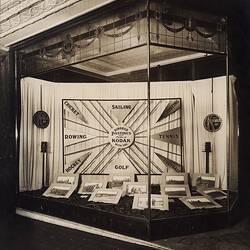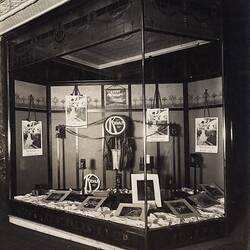Summary
Kodak Australasia operated retail branches in New Zealand and every Australian state capital, plus processing centres across the country, and a network of allied pharmacies and camera stores, all of which sold Kodak products.
Prior to their merger with Eastman Kodak to create Australian Kodak Limited, Baker & Rouse Pty Ltd had retail stores in Melbourne, Sydney, Brisbane and Adelaide. They sold Austral products which were manufactured in their Abbotsford works in Melbourne, along with other quality imported goods.
When Kodak Limited, the London branch of Kodak, failed in their Melbourne retail venture at 284-286 Collins Street in 1903 due to import tariff restrictions, Baker & Rouse sought a closer and more direct alliance with Eastman Kodak in Rochester. By 1904 Baker & Rouse were the sole distributor of Eastman Kodak products in the country and, in 1905, had taken over the Kodak Limited Block Arcade premises at 284 Collins Street.
When the Australian government greatly increased import tariffs in 1907, Thomas Baker successfully brokered a deal with George Eastman to manufacture and finish Kodak products in Australia, and Baker & Rouse were acquired by Eastman Kodak.
From 1908 with the commencement of Australian Kodak Limited, Baker & Rouse's retail stores were converted to Kodak sales branches but continued to operate under the name Baker & Rouse. They sold both Kodak and Baker & Rouse products, and managers sent sales reports to JJ Rouse's Head Office in Sydney.
The business rapidly expanded and by the mid-1920s Kodak was an Australasia-wide company with sales branches in New Zealand and every Australian state capital, plus processing centres across the country and a network of allied pharmacies and retail stores in central, regional and rural areas, all of which sold Kodak products.
Each capital city, and some major regional towns, had a retail centre and processing facility for developing customer's negatives and enlarging prints. The managers of these facilities reported to Head Office directly. There were also independent retailers and pharmacies in regional and rural areas which sold and processed Kodak products according to an agreement with the Australian Pharmacy Guild. Stock and marketing for all of the above stores was arranged through each state branch.
In the 1950s and 1960s, Kodak streamlined their retail and marketing operations. Wholesale warehouses and larger headquarters were built around the country including Brisbane's Fortitude Valley (1958), Sydney's Annandale (1967), Adelaide's North Terrace and of course the opening of Melbourne's Coburg plant in 1961. These were new multistorey modern buildings that either replaced the older stores and warehouses in each state, or worked alongside them. Color laboratories were a new feature in each state to cater for the rising demand in color photography. There were state branch managers who reported to a Marketing Manager in Head Office, but each state still managed its own clients and smaller retail stores.
Further streamlining was implemented throughout the 1970s and 1980s. The sales/marketing divisions were organised into five regions, Northern (Queensland), Southern (Victoria), Eastern (New South Wales), Central (South Australia and Northern Terriory) and Western (Western Australia). Internally, staff still referred to them as branches rather than 'regions' until further restructures in the 1980s. Also in the 1980s and 1990s, large chain stores like K-Mart and Myers were approved to sell Kodak products. This created some difficulty for smaller pharmacies but it proved a profitable venture for Kodak.
Sales managers into the 1990s and 2000s were reporting directly to Head Office in Coburg, but according to a recent interview with Murray Walton, a former Chief Financial Officer and Managing Director, there was still a small Sydney-based retail management team until 2002/3, when the decision was made to close the office. This was a time of increasing efficiency reviews and strategic management until Rochester's final decision to end Kodak owned retail operations and Australian manufacture permanently in 2004.
Kodak kept a record of all their branch activities at head office, and many of these financial documents, photographs and promotional materials, particularly from the first half of the twentieth century, have ended up in Museum Victoria's Kodak Heritage Collection.
References:
Beale, N. The History of Kodak in Australia, Coburg, 1983
The Argus, 9 Sep 1926, p. 26 Supplement: AN HISTORIC SOUVENIR url: http://trove.nla.gov.au/ndp/del/article/3807811/449523
Oral History:
Murray Walton, interviewed by Lesley Alves 2014
John Kerr, interviewed by Fiona Kinsey 2012
More Information
-
Keywords
Photography, Advertising, Retailing, Promotional Materials, Shopfronts
-
Authors
-
Article types
